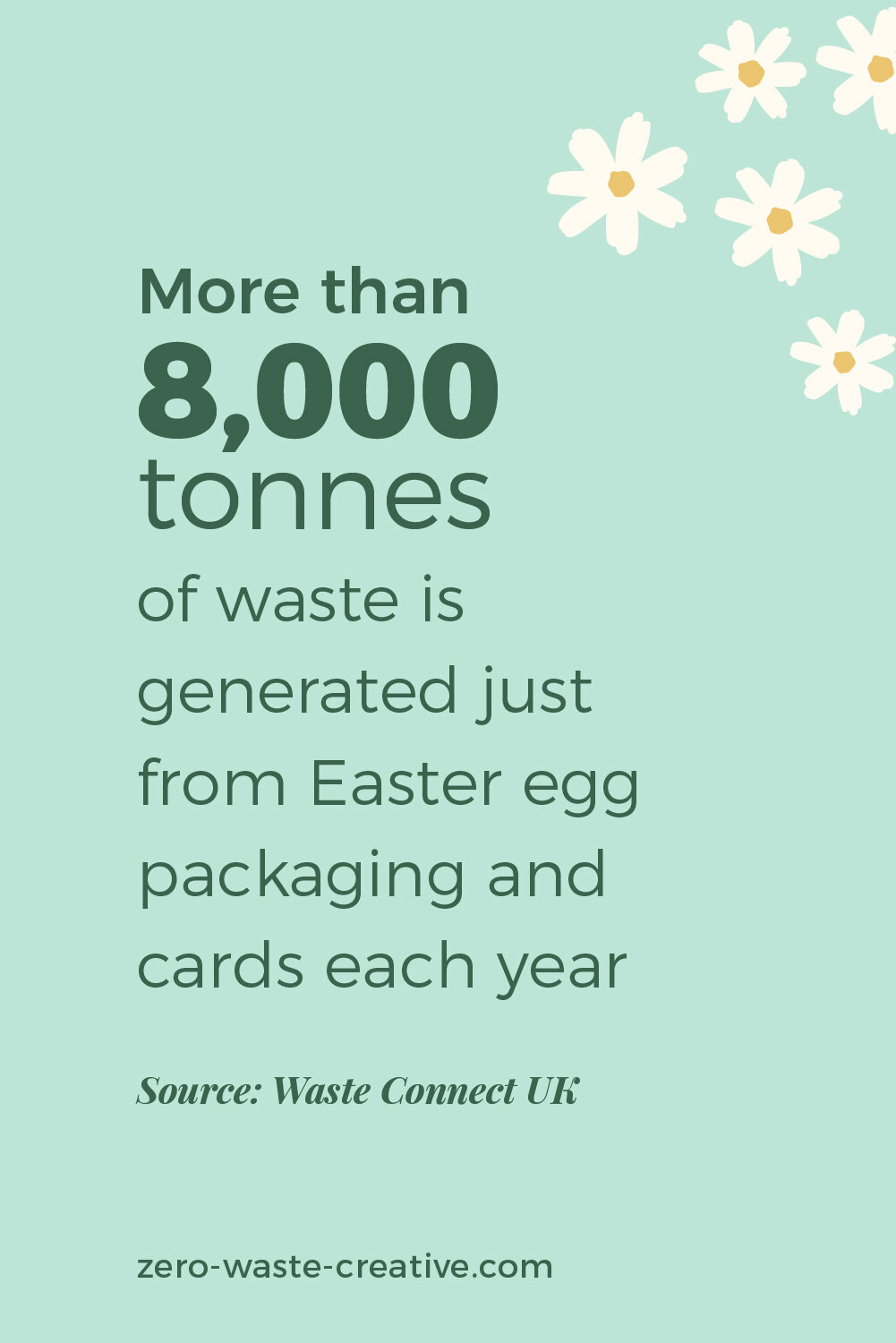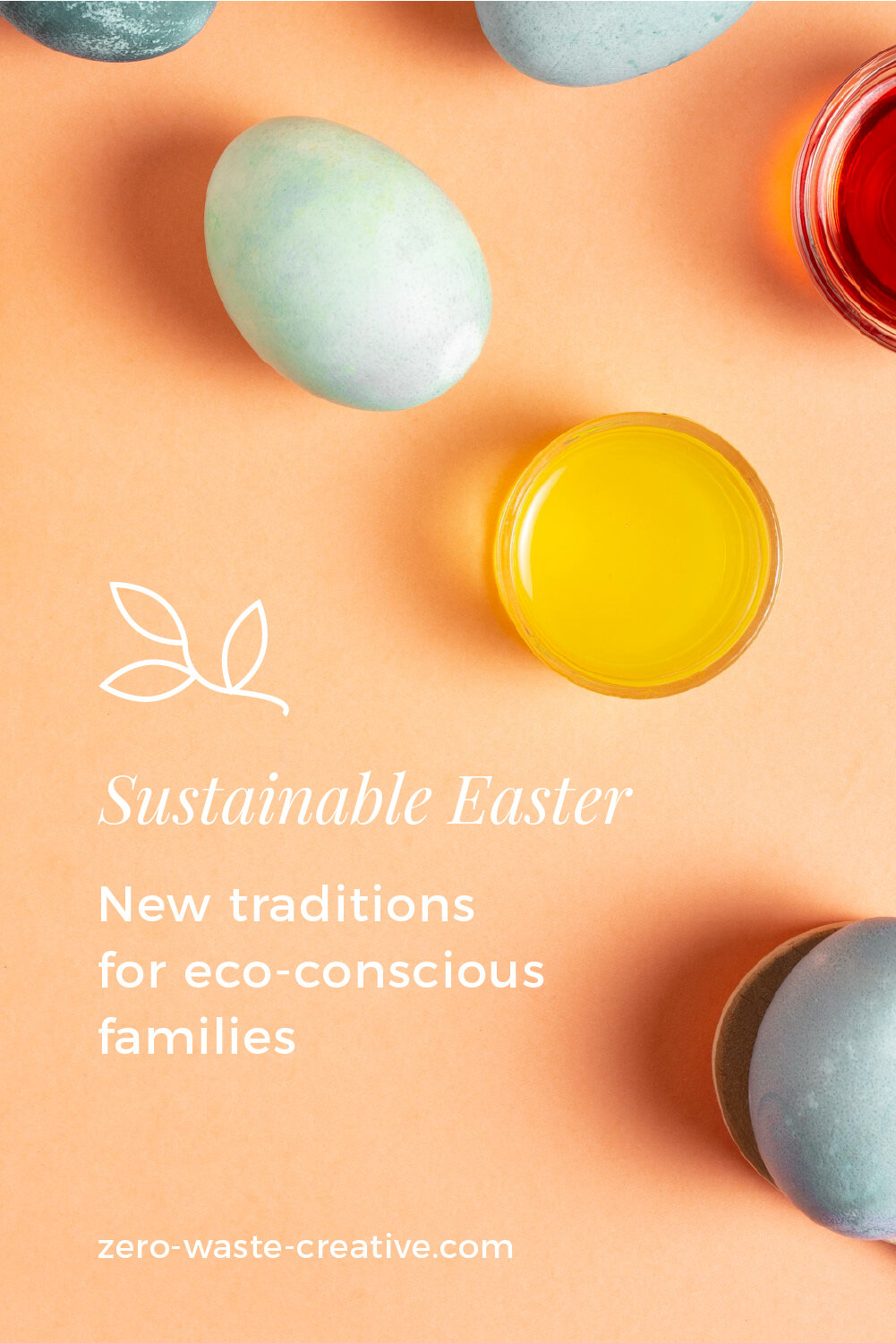Zero Waste Easter Ideas
Easter is such a great holiday. A long weekend break, pastel colours, and the promise of warmer weather just around the corner is just the boost we need after enduring an East Coast Canadian winter.
When I was young I lived in a very small village in Romania with my mom. In that village tradition was EVERYTHING. Every year we would go to Church, pick up willow to make a crown of it, pick up wildflowers and own a new thing (it was usually clothing). More than that, the villagers appreciated the community, and every year we had a big event where everybody would participate with delicious treats — kind of like a potluck.
Like any celebration, Easter can produce some extra opportunities for waste. From cooking for a larger group to yearly family traditions, unsustainable practices tend to run rampant during holidays. Prevent this from happening by planning ahead or create new traditions rooted in sustainable practices so they can ethically be carried on for years to come.
Here are some of my favorite tips on how to create less waste this Easter:
Buy Easter Candies in Bulk (and locally)
Everybody in Canada seems to LOVE buying those little Easter chocolate eggs. I personally don’t enjoy them that much but if you do, you can find them at Bulk Barn for sure. I couldn’t find any Canadian studies on Easter waste production, but Waste Connect UK reports more than 8,000 tonnes of waste is generated just from Easter egg packaging and cards alone. For a festive visual reference, that’s the same weight as 1.6 million rabbits! It’s safe to assume our waste production numbers are even worse here in Canada too, as we are sadly ranked the #1 largest producer of waste per capita. Try opting for package-free sweets this year by checking out your local bulk store.
Organize an Egg Hunt for the Kids in the Neighbourhood
This is so much fun to organize and it will make some kids happy. I mean, it might not be possible in your neighbourhood, but if you know your neighbours and you are not hating each other, this might be a great activity for Sunday. You can even keep the social distance.
Here is how to do it:
Go talk to your neighbours and see if they are interested in participating with their kids and candies. We have a neighbourhood Facebook group where we share things like that.
Get candies and cute little paper bags to put the candies in. OR, even better, you can use cute jars to add candies. this way if it rains or it is wet outside, the candies will not get wet.
Make an invite for the kids in the neighbourhood and give it to them.
Make a map of the treats (just so the kids don’t miss anything)
Don’t forget to set up a time and place
To make it even more fun, bring a blanket, soap bubbles and other fun toys for the kids.
Make Baking at Home a Tradition
They say food brings people together, and it’s true! If you are trying to work towards living waste-free, this might be the perfect time to attempt a new recipe instead of settling on store-bought goods. Baking at home will allow you full control of the waste produced, plus its’ a great family activity. If you are looking for something new, I recommend you the Romanian “Cozonac”. A classic, simple, sweetened yeast bread with a nutty filling. This could be an awesome educational opportunity too — take the time to learn about how the county or culture of the recipe’s origin celebrates Easter.
Dye your Eggs Naturally
I LOVE this tradition. My mom taught me a few tricks of how to dye the eggs without any artificial dye. Most synthetic food dyes are derived from petroleum or crude oil. These are technically food “safe” but their production contributes heavily to air and water pollution that hurts communities. Skip the boxed dye kit this year and create your own dyes from the food you have at home already.
Zero-waste Easter Egg Dye. Turmeric, Pickled Beets Juice, spinach
For dark red use onion skins.
For purple, you can use beets juice, blueberries, or red cabbage
For light red use pomegranate
For brown use coffee
For orange use turmeric
For yellow use saffron (but too expensive)
For light green use spinach
I always choose three colours to do every year. You can choose more, but being a bit flexible with colours allows you to make the most of what you have. Work with the leftovers or food scraps you already have to achieve a variety of colours: beets, blueberries, cabbage, and pomegranate are all great options — the surprise of the colour’s outcome can add to the fun!
Make new Traditions:
If you are like me, this year’s Easter will be pretty relaxed. None of us need the extra pressure or expenses of holiday expectations with so much else going on in the world. My advice: try not to stress too much about it! I will probably just be dying a few eggs and make some cozonac.
Keep to an easy weekend and try incorporating one of these easy to organize activities as a new tradition:
Gift presence, not presents this Easter
One of the biggest lessons I have learned in this life is the importance of being around the people you love and giving them your full attention. After this past year, I think we can all appreciate the true gift that is community. Remember that food will be eaten, and gifts will wear out, but memories of special moments will last a lifetime. Gift those you love a listening ear, a hand to hold, or a shared laugh.
Sustainable living is about so much more than just consuming less — it’s about being aware of your surroundings, the impact you have on the planet, and the future of others. Be kind to yourself and those around you this year, and have a lovely Easter weekend.
What’s your favorite thing about Easter? Check out my Pinterest board for more creative eco-friendly ideas.
Until next week,
— Claudia






